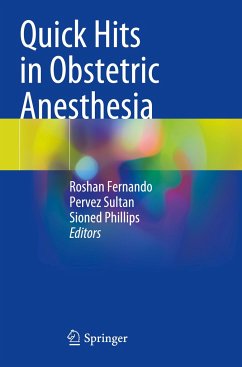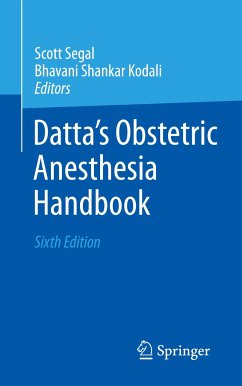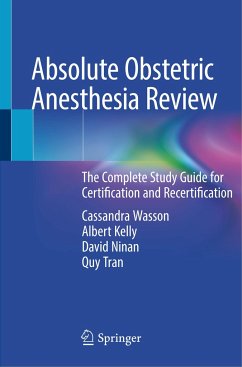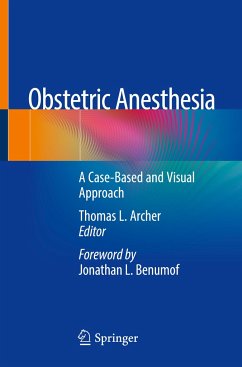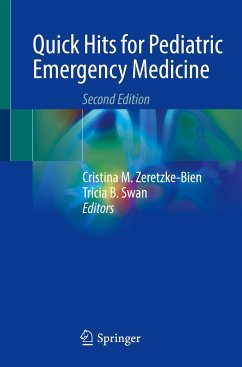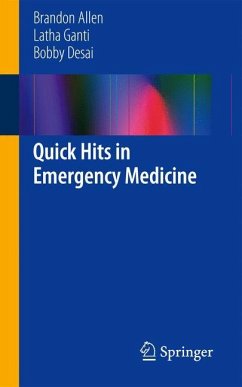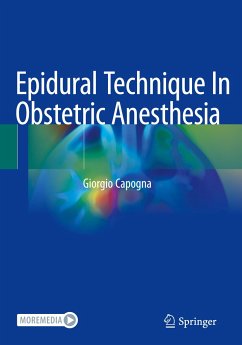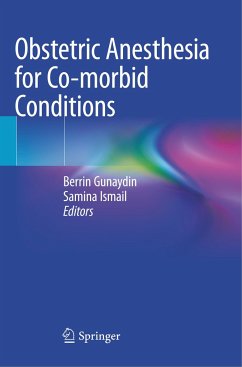
Quick Hits in Obstetric Anesthesia

PAYBACK Punkte
56 °P sammeln!
This book provides easy to follow guidance on how to manage emergency situations and common problems in obstetric anesthesia. The book provides different anesthetic recipes for obstetric procedures and describes challenges that will be encountered on a day-to-day basis. There are trouble-shooting chapters and 'what to do lists' for frequent dilemmas. The book covers obstetric-specific resuscitation and medical emergencies seen on the labor ward. Antenatal and postpartum complications relating to anesthesia are covered as well as issues that may arise during follow up of patients who have had n...
This book provides easy to follow guidance on how to manage emergency situations and common problems in obstetric anesthesia. The book provides different anesthetic recipes for obstetric procedures and describes challenges that will be encountered on a day-to-day basis. There are trouble-shooting chapters and 'what to do lists' for frequent dilemmas. The book covers obstetric-specific resuscitation and medical emergencies seen on the labor ward. Antenatal and postpartum complications relating to anesthesia are covered as well as issues that may arise during follow up of patients who have had neuraxial anesthesia during delivery.
Quick Hits in Obstetric Anesthesia should be used as a cognitive aid for emergency cases and as a decision-making tool for urgent management plans. It is a guide to common problems and provides core knowledge to facilitate anesthesia care on labor wards for allgrades of anesthetist.
Quick Hits in Obstetric Anesthesia should be used as a cognitive aid for emergency cases and as a decision-making tool for urgent management plans. It is a guide to common problems and provides core knowledge to facilitate anesthesia care on labor wards for allgrades of anesthetist.



